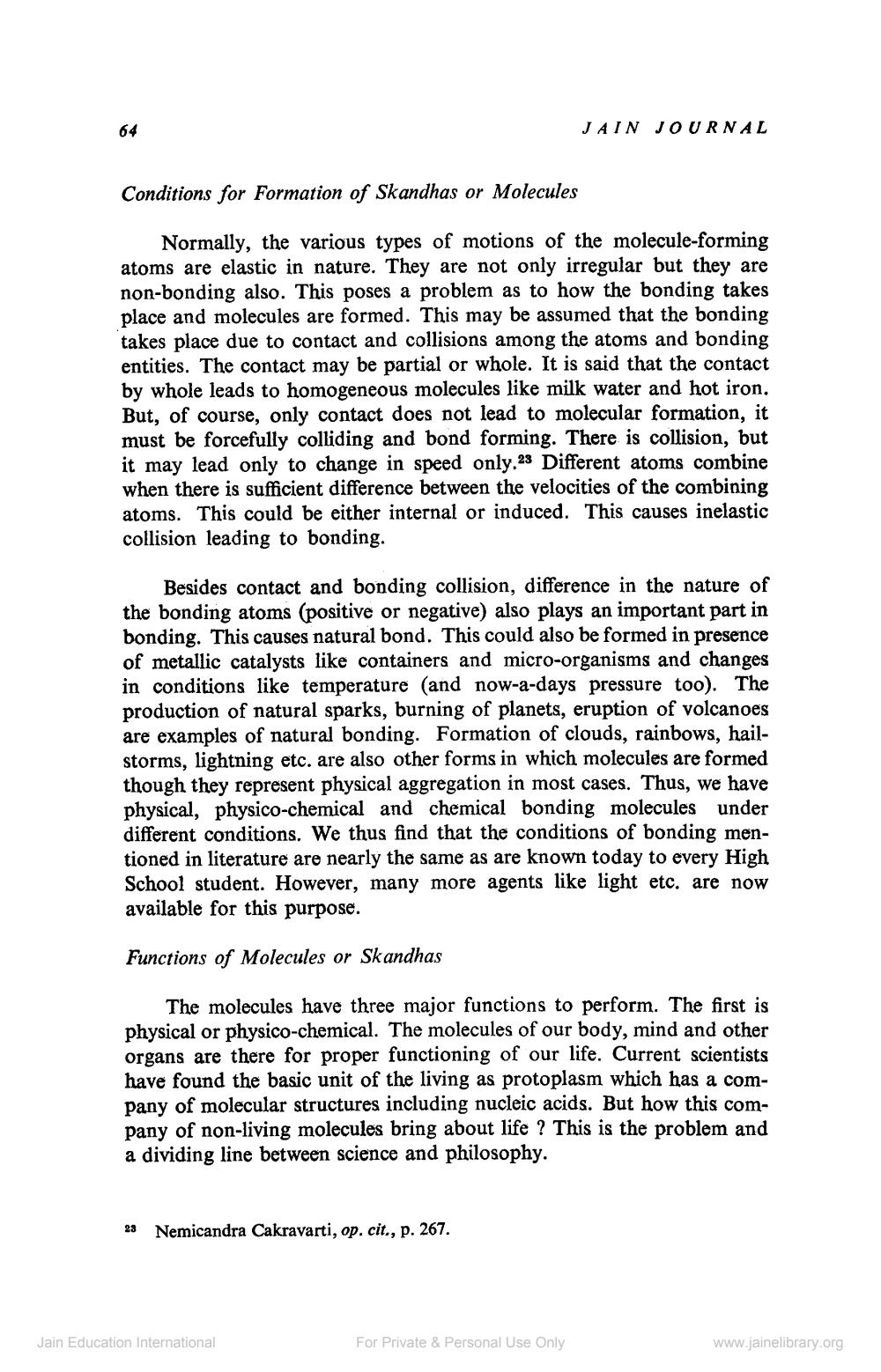________________
JAIN JOURNAL
Conditions for Formation of Skandhas or Molecules
Normally, the various types of motions of the molecule-forming atoms are elastic in nature. They are not only irregular but they are non-bonding also. This poses a problem as to how the bonding takes place and molecules are formed. This may be assumed that the bonding takes place due to contact and collisions among the atoms and bonding entities. The contact may be partial or whole. It is said that the contact by whole leads to homogeneous molecules like milk water and hot iron. But, of course, only contact does not lead to molecular formation, it must be forcefully colliding and bond forming. There is collision, but it may lead only to change in speed only. 23 Different atoms combine when there is sufficient difference between the velocities of the combining atoms. This could be either internal or induced. This causes inelastic collision leading to bonding.
Besides contact and bonding collision, difference in the nature of the bonding atoms (positive or negative) also plays an important part in bonding. This causes natural bond. This could also be formed in presence of metallic catalysts like containers and micro-organisms and changes in conditions like temperature (and now-a-days pressure too). The production of natural sparks, burning of planets, eruption of volcanoes are examples of natural bonding. Formation of clouds, rainbows, hailstorms, lightning etc. are also other forms in which molecules are formed though they represent physical aggregation in most cases. Thus, we have physical, physico-chemical and chemical bonding molecules under different conditions. We thus find that the conditions of bonding mentioned in literature are nearly the same as are known today to every High School student. However, many more agents like light etc. are now available for this purpose.
Functions of Molecules or Skandhas
The molecules have three major functions to perform. The first is physical or physico-chemical. The molecules of our body, mind and other organs are there for proper functioning of our life. Current scientists have found the basic unit of the living as protoplasm which has a company of molecular structures including nucleic acids. But how this company of non-living molecules bring about life ? This is the problem and a dividing line between science and philosophy.
23 Nemicandra Cakravarti, op. cit., p. 267.
Jain Education International
For Private & Personal Use Only
www.jainelibrary.org




